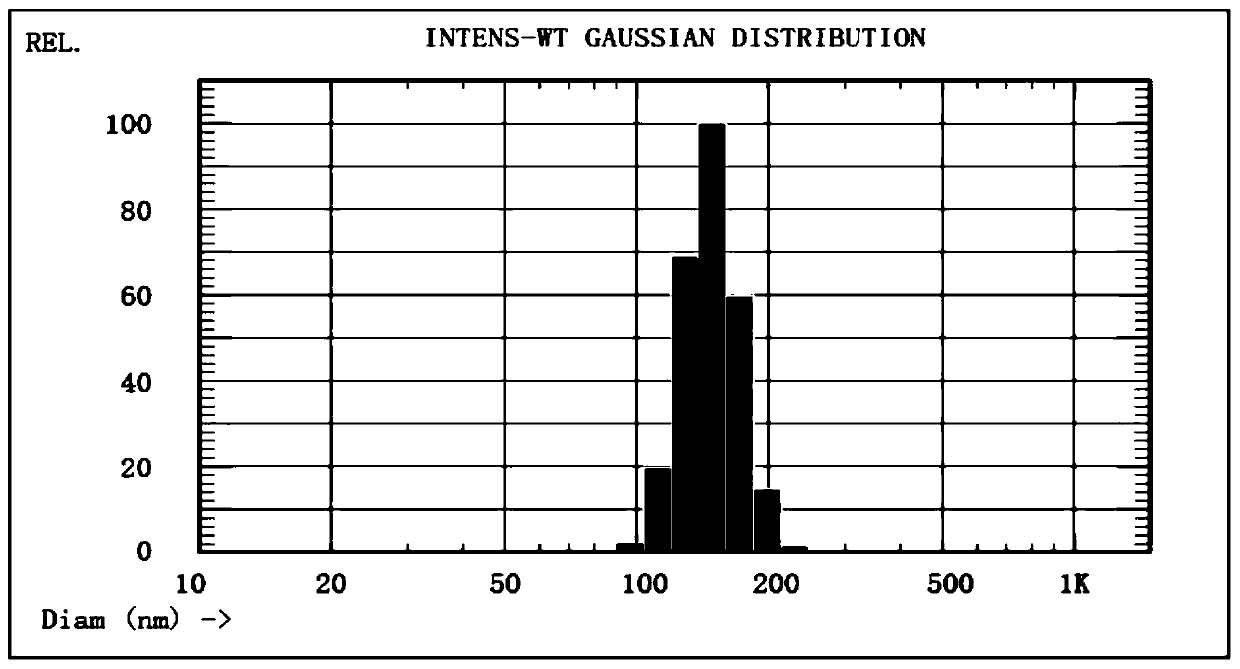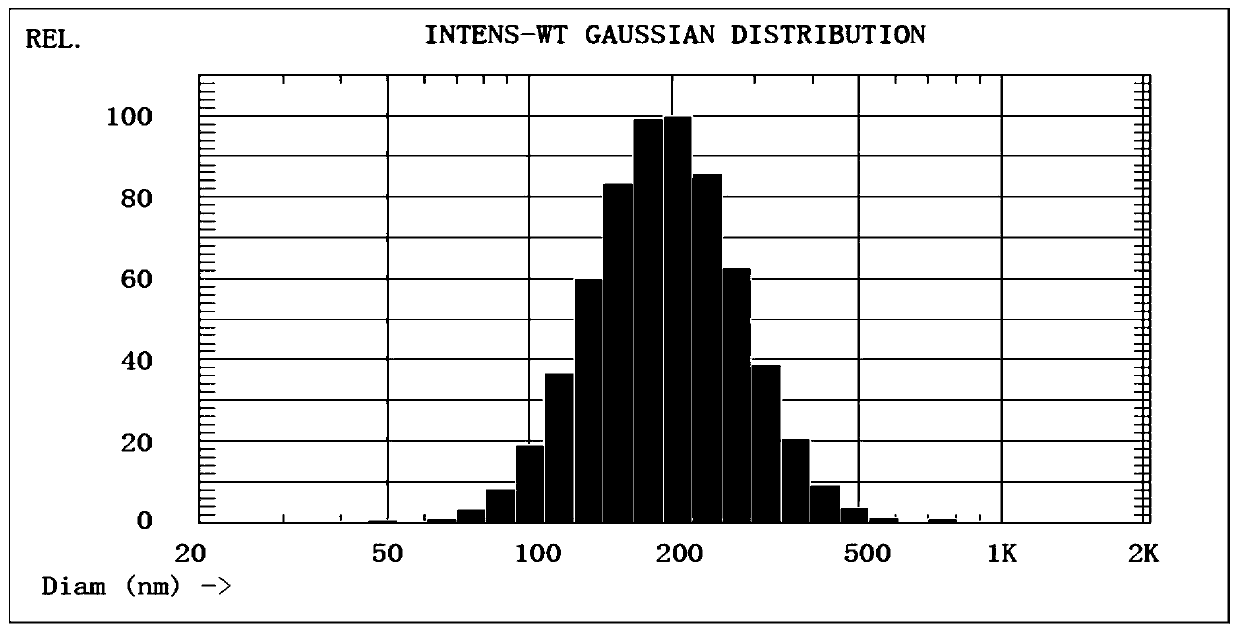Preparation method and application of cuttlefish ink nanometer particles
A technology of nano-particles and squid ink, applied in the field of food processing, to achieve good solubility, uniform particle size distribution, and stable storage
- Summary
- Abstract
- Description
- Claims
- Application Information
AI Technical Summary
Problems solved by technology
Method used
Image
Examples
Embodiment 1
[0037] A preparation method of squid ink nanoparticles, comprising the steps of:
[0038] 1. Pretreatment of squid ink sacs. After thawing the frozen tabby squid ink sacs with running water, cut the ink sacs and soak the whole ink sacs with an equal volume of deionized water overnight, at 8000r min -1 The supernatant was removed after centrifugation at a speed of 10 min, and the precipitate was freeze-dried to obtain the crude squid melanin;
[0039] Two, enzymatic hydrolysis of squid ink melanin crude product, with hydrolysis degree as index, adding solid-liquid ratio to the above crude product is 2.0% deionized water, adjust pH to 10.0, add the enzyme of 4260U / g (select Nanning Pangbo Bioengineering Co., Ltd. Alkaline protease produced by the company), after enzymolysis at 51°C for 4.5 hours, inactivate the enzyme (the method of inactivating the enzyme is to inactivate at 100°C for 10 minutes), cool to room temperature, and then filter through a 200-mesh sieve to obtain the ...
Embodiment 2
[0045] A preparation method of squid ink nanoparticles, comprising the steps of:
[0046] 1. Pretreatment of squid ink sacs. After thawing the frozen tabby squid ink sacs with running water, cut the ink sacs and soak the whole ink sacs with an equal volume of deionized water overnight, at 8000r min -1 The supernatant was removed after centrifugation at a speed of 10 min, and the precipitate was freeze-dried to obtain the crude squid melanin;
[0047] Two, enzymatic hydrolysis of squid ink melanin crude product, with the degree of hydrolysis as an index, adding deionized water with a solid-liquid ratio of 2.5% to the above crude product, adjusting the pH to 9.0, adding 4060U / g of enzyme (selecting alkaline protease), 48 After enzymatic hydrolysis at ℃ for 4.0h, inactivate the enzyme (the method of inactivating the enzyme is high temperature inactivation at 100℃ for 10min), cool to room temperature, then filter through a 200-mesh sieve to obtain the enzymolyzed cuttlefish juice,...
Embodiment 3
[0052] A preparation method of squid ink nanoparticles, comprising the steps of:
[0053] 1. Pretreatment of squid ink sacs. After thawing the frozen tabby squid ink sacs with running water, cut the ink sacs and soak the whole ink sacs with an equal volume of deionized water overnight, at 8000r min -1 The supernatant was removed after centrifugation at a speed of 10 min, and the precipitate was freeze-dried to obtain the crude squid melanin;
[0054] Two, enzymatic hydrolysis of squid ink melanin crude product, taking the degree of hydrolysis as an index, adding the deionized water with a solid-liquid ratio of 1.7% to the above crude product, adjusting the pH to 11.0, adding 4460U / g of protease (selecting alkaline protease), 54 After enzymatic hydrolysis at ℃ for 5.0h, inactivate the enzyme (the method of inactivating the enzyme is high temperature inactivation at 100℃ for 10min), cool to room temperature, then filter through a 200-mesh sieve to obtain the enzymolyzed cuttlefi...
PUM
| Property | Measurement | Unit |
|---|---|---|
| The average particle size | aaaaa | aaaaa |
| The average particle size | aaaaa | aaaaa |
| The average particle size | aaaaa | aaaaa |
Abstract
Description
Claims
Application Information
 Login to View More
Login to View More - R&D
- Intellectual Property
- Life Sciences
- Materials
- Tech Scout
- Unparalleled Data Quality
- Higher Quality Content
- 60% Fewer Hallucinations
Browse by: Latest US Patents, China's latest patents, Technical Efficacy Thesaurus, Application Domain, Technology Topic, Popular Technical Reports.
© 2025 PatSnap. All rights reserved.Legal|Privacy policy|Modern Slavery Act Transparency Statement|Sitemap|About US| Contact US: help@patsnap.com



